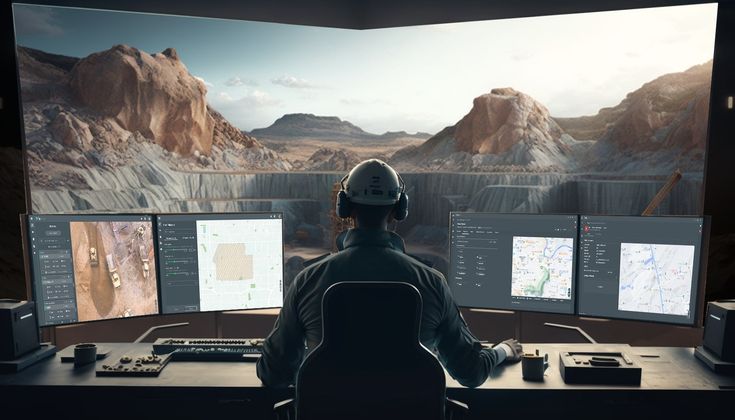
Mining is one of the world’s oldest industries—responsible for providing the raw materials that power economies, build cities, and manufacture goods. But today’s mining operations look vastly different from the pick-and-shovel days of the past. Modern mining is a sophisticated, tech-driven industry, evolving rapidly to meet the growing global demand for minerals while also minimizing environmental impact and maximizing efficiency. In this blog post, we explore the vital role of technology in modern mining operations.
1. Precision Through Automation
One of the most transformative advancements in mining is automation. From autonomous haul trucks and drilling rigs to remotely controlled loaders, automation reduces the need for manual labor in dangerous environments, increases safety, and improves productivity.
Autonomous equipment can operate around the clock without fatigue, delays, or human error. In open-pit mines, for example, automated trucks follow programmed routes with extreme accuracy, optimizing fuel usage and reducing maintenance needs. Underground, remotely operated vehicles reduce the risk to human miners in confined or hazardous zones.
2. Real-Time Data & Predictive Analytics
Data is now one of the most valuable resources in mining. Using sensors, drones, and Internet of Things (IoT) devices, mining companies can collect real-time data on everything from equipment health to ore quality and geological formations.
This data feeds into predictive analytics platforms powered by artificial intelligence (AI) and machine learning. The result? Improved decision-making. For instance, predictive maintenance systems can alert teams to mechanical issues before they result in costly breakdowns, while advanced geological modeling tools help teams identify promising mineral deposits more accurately.
3. Drones and Aerial Surveying
Drones have become indispensable tools in both exploration and operational management. Equipped with high-resolution cameras and LiDAR (Light Detection and Ranging) technology, drones conduct aerial surveys to map terrain, monitor environmental impact, and measure stockpiles.
This technology dramatically reduces the time and cost associated with traditional surveying methods. It also allows operators to assess inaccessible or unsafe areas without putting human lives at risk.
4. Digital Twins and Simulation Modeling
A digital twin is a virtual replica of a physical mining operation. By simulating the entire mining process, companies can test different operational strategies, forecast production, and evaluate the potential impact of variables like equipment failure or weather conditions—all before implementing changes on-site.
Simulation tools help in resource planning, reducing trial-and-error costs and optimizing both short- and long-term mining strategies.
5. Sustainability and Environmental Monitoring
Technology is also driving greener mining practices. Real-time environmental monitoring systems track emissions, water usage, and waste management. AI systems can optimize energy use across the mining process, reducing carbon footprints.
Technologies like bioleaching and sensor-based ore sorting improve mineral recovery rates while lowering chemical usage and waste. These innovations not only help companies meet regulatory standards but also demonstrate a commitment to environmental responsibility—key to maintaining public trust.
6. Enhanced Worker Safety and Training
Wearable tech—such as smart helmets and biometric monitors—can detect fatigue, monitor worker health, and provide early warnings in case of dangerous conditions like gas leaks or equipment malfunctions.
In addition, virtual reality (VR) and augmented reality (AR) tools are revolutionizing training by allowing workers to simulate complex scenarios in a controlled environment. This improves preparedness while reducing on-site training risks.
7. Blockchain for Supply Chain Transparency
As global consumers demand more transparency, blockchain technology is being adopted to track minerals from mine to market. It ensures ethical sourcing, verifies compliance with regulations, and builds trust with buyers, especially for conflict-sensitive materials like cobalt, lithium, and gold.
Final Thoughts
Technology is not just enhancing mining operations—it’s redefining what’s possible. By integrating automation, AI, data analytics, and sustainability tools, mining companies can improve productivity, reduce costs, protect workers, and operate more responsibly. The digital transformation of mining is not a future concept—it’s happening now.
As the demand for minerals continues to grow, the companies that invest in and adapt to technological innovation will lead the charge in shaping the future of mining.
